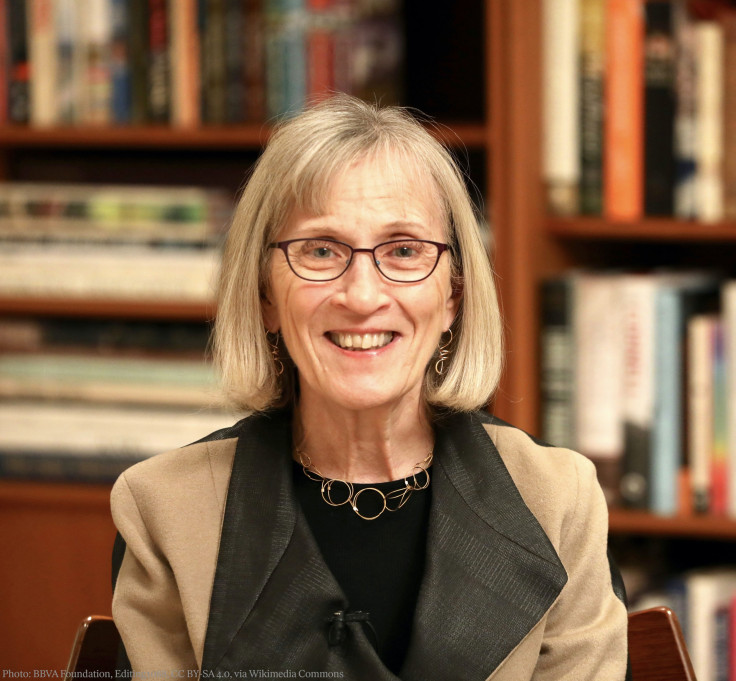Economics Nobel Prize Honours Two Centuries Data Analysis of Gender Gap In Earnings
The Nobel Prize Organisation honoured Claudia Goldin for shedding light on the various underlying factors like childbirth and contraceptive pills as reasons behind the gender gap in earnings.

The Nobel Prize Organisation ended this year's Nobel Prize declarations with a record number of four women laureates with the economics award going to Harvard economist Claudia Goldin.
On Monday, October 9, the Royal Swedish Academy of Sciences decided to confer the 2023 Nobel Prize for economics to 77-year-old economist Claudia Goldin.
This comes at a time when the Iranian activist Narges Mohammadi bagged the Nobel Prize for Peace while Hungarian scientist Katalin Karikó and the Swedish physicist Anne L'Huillie won the Medicine Nobel and Physics Nobel respectively.
Officially known as the Sveriges Riksbank Prize in Economic Sciences, the economics Nobel has been seldom given to women economists. Goldin is the third woman laureate in economics.
Earlier, Elinor Ostrom and Esther Duflo won the Economics Nobel in 2009 and 2019 respectively.
Announcing the Nobel Prize in Economics, the Nobel Prize Organisation said that Goldin has been conferred the award "for having advanced our understanding of women's labour market outcomes".
BREAKING NEWS
— The Nobel Prize (@NobelPrize) October 9, 2023
The Royal Swedish Academy of Sciences has decided to award the 2023 Sveriges Riksbank Prize in Economic Sciences in Memory of Alfred Nobel to Claudia Goldin “for having advanced our understanding of women’s labour market outcomes.”#NobelPrize pic.twitter.com/FRAayC3Jwb
The Harvard economist's decades of analysis of the women's labour market discovered key gender disparity issues in employment including childbirth and the decision-making ability of women.
Claudia Goldin provided the first comprehensive account of women's earnings and labour market participation through the centuries, said the Nobel Prize Organisation through a Facebook post.
Goldin's work revealed the reasons behind the gender gap in employment and in the labour market. She identified the main sources of gender gap and how women's employment changed over the years.
Through a post on Facebook, the Nobel Prize Organisation elaborated on how Goldin's research highlighted the reason behind the 10 to 20 per cent gender disparity in earnings despite equal pay laws in high-income economies.
In her first reaction after winning the Economics Nobel Claudia Goldin said she always wanted to be a detective and finally succeeded in it.
By trawling through the archives and compiling and correcting historical data, this year’s economic sciences laureate Claudia Goldin has been able to present new and often surprising facts. She has also given us a deeper understanding of the factors that affect women’s… pic.twitter.com/uxd4Q188KG
— The Nobel Prize (@NobelPrize) October 9, 2023
Nobel for discovering the underlying factors of the gender gap in earnings
According to Goldin's research women are under-represented in the global labour market because of gender disparity in earnings. As they earn less than men their work is less represented
The economist from Harvard University analysed US data collected spanning over 200 years to understand the gender disparity in earnings. Two centuries of data analysis revealed that female participation in the labour market followed a U-shaped instead of a steady upward trend.
As society progressed from an agricultural economy to an industrial economy in the early 19th century married women started participating less in the labour market. However, as soon as the service sector gathered momentum in the early 20th century married women started returning to work.
Goldin attributes this change in women's employment pattern to structural changes in the labour market and the evolving social norms that changed the perceptions regarding women's responsibilities towards home and family.
Her work also sheds light on the effect women's education has on employment along with access to things like contraceptive pills. Most high-income countries had a higher rate of women's education in the 20th century compared to men. This acted as a crucial step for career planning in women, driving them to work in the service sector. The access to contraceptive pills also gave them the liberty to look for new opportunities and career planning.
However, economic growth and modernisation in the 20th century didn't narrow down gender disparity in earnings despite a boom in women's employment.
Goldin explained that this was happening because women were making educational and career decisions at a relatively younger age, taking cues from their mothers. They took lessons from the previous generation who didn't return to work until the children grew up. This resulted in slow career development as women settled for lesser educational degrees and fewer career opportunities.
Goldin further explained how the gender gap in earnings widened with childbirth. Although historically gender pay gap occurred due to occupational and educational choices, here childbirth pitted women of the same profession against each other. The birth of the first child is the primary trigger point of this.
The Chair of the Committee for the Prize in Economic Sciences Jakob Svensson underlined why this particular research is important as it sheds light on "the underlying factors" behind the gender gap in earnings and "the barriers" that need to be addressed in the future.
© Copyright IBTimes 2025. All rights reserved.






















